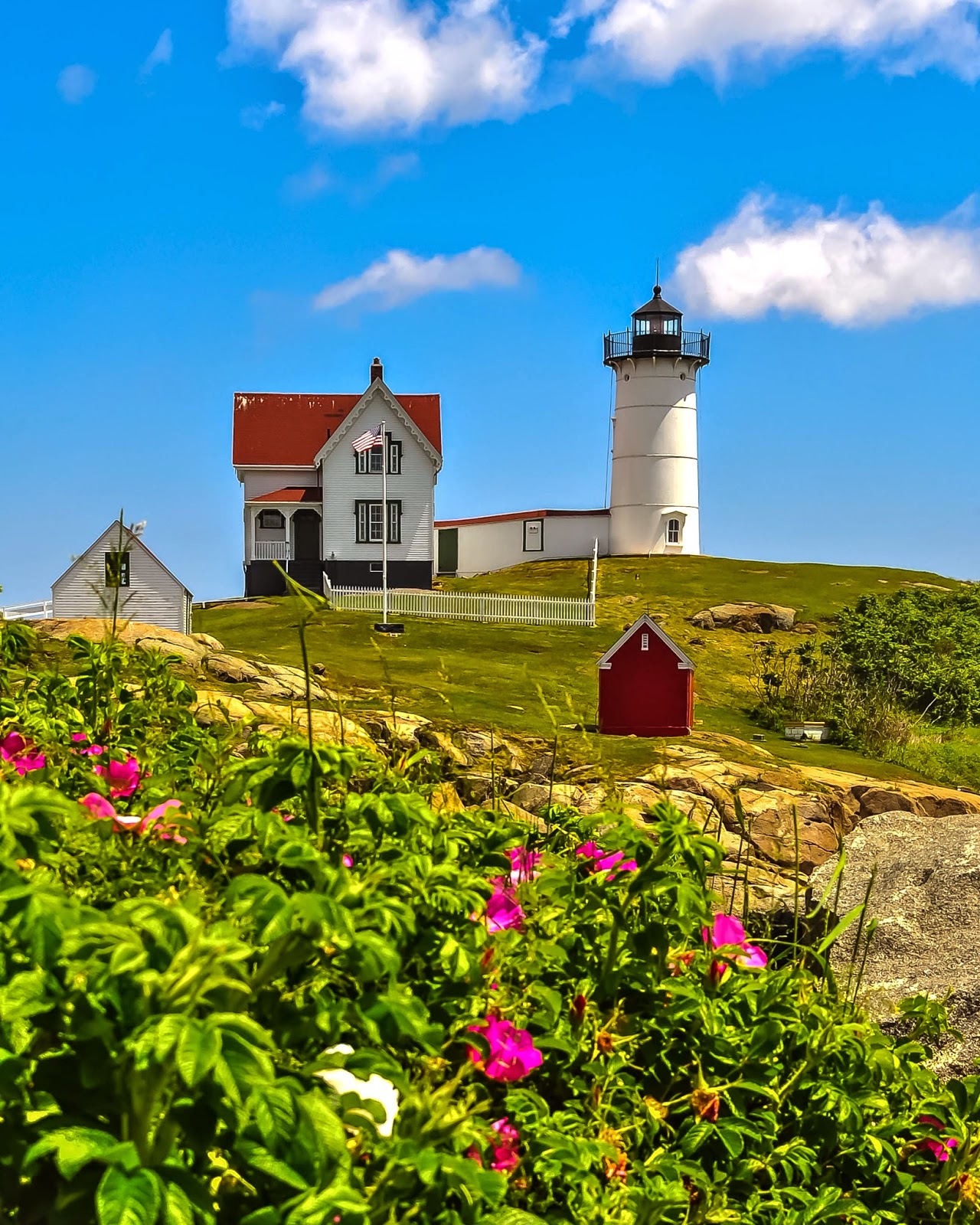Squirrel Point Light, on Arrowsic Island, is one of several aids to navigation authorized in 1895 and erected in 1898 on the Kennebec River, a bustling waterway at the time. The 25-foot wooden tower is very similar to the lighthouses built at nearby Doubling Point and Perkins Island. The Victorian keeper's house, garage and barn were all built along with the tower in 1898. The boathouse and oil house were added a few years later.
George Matthews, the first keeper, was in charge until 1912. He had previously been an assistant keeper at Whitehead Light in Maine. Later keepers included Arthur V. Smith and Clarence Skolfield, who was the last civilian keeper. Skolfield also served at two other stations in the vicinity, at Seguin Island and Perkins Island.
Stanley Reynolds and his wife had two children born at the light station during their stay in the 1950s. Tragedy struck in 1955 when their three-year-old son, Scotty, fell into the river and drowned. The Reynolds, who went on to have 12 children, left Squirrel Point a short time later.
The last resident Coast Guard keeper was Joseph Robicheau, who lived at Squirrel Point with his wife, Leanne, and their two daughters. The Robicheaus endured a memorable Christmas in 1980, with when the wind chill at was 50 below zero.
To reach their car, a mile away through the woods, so they could get to their planned Christmas dinner, the family bundled up and boarded a snowmobile, with a sled in tow for the two little girls.
The light was automated in the early 1980s and the fifth-order Fresnel lens was removed and replaced by a modern optic. For some time after that, the light was monitored by the keeper at the Kennebec River (Doubling Point) Range Light Station, a few miles up the river.
Beginning in February 1982, Karen McLean, one of a very few female Coast Guard lighthouse keepers, was in charge of the that range light station as well as the stations at Squirrel Point and Doubling Point. When the foghorn was needed at Squirrel Point, McLean had to tramp through the one-mile path in the woods from her car to reach the station. In winter the trip sometimes required cross-country skis.
Mike Trenholm, a semi-retired real estate dealer from Yarmouth, Maine, first saw Squirrel Point Light while on a cruise on the Kennebec River in 1993. Three years later he formed a nonprofit organization, Squirrel Point Associates, Inc. He was granted the five-acre station by the Coast Guard in 1998.
The deed required that Squirrel Point be "used for educational, historic, recreational, cultural and wildlife conservation programs for the general public" and that it be "maintained in a manner consistent with the provisions of the National Historic Preservation Act of 1966."
Trenholm put some work into the property, including putting new wiring, heating and plumbing in the keeper's house. He hoped to establish an educational facility at Squirrel Point Light Station, but health problems got in the way.
A new group called Citizens for Squirrel Point (CSP) formed to ensure that the light station would be used and maintained in accordance with federal, state, and local laws, as well as the covenants in the 1998 deed from the U.S. government. In August 2003, the Citizens for Squirrel Point filed suit in federal district court.
In February 2005, a federal judge ruled in CSP’s favor. All rights, title, and interest in Squirrel Point Light Station thus reverted to the U.S. government.
In February 2008, the Chewonki Foundation signed a 15-year license to manage the light station property. Later, the directors of the organization decided that the lighthouse didn't fit into their plans. The license was subsequently transferred to Citizens for Squirrel Point.
Directions: The light station is accessible via a 2/3-mile trail at the end of Bald Head Road in Arrowsic. It is surrounded by conservation lands managed by the Division of Inland Fisheries and Wildlife and the Nature Conservancy. The attractive little light station can also be viewed from cruises leaving Bath and Boothbay Harbor, and it can be seen from across the river in Phippsburg.
Credits: I would like to thank Jeremy D'Entremont, webmaster of, http://www.newenglandlighthouses.net/, for sharing the above history. Jeremy is a speaker, author, historian, and tour guide who is widely recognized as the foremost authority on the lighthouses of New England. To view a story on him, go to, (Jeremy D'Entremont).




















.jpg)

.jpg)


.jpg)























